“The article discusses the concept of harmony in nature and how it has been studied throughout history. It focuses on Johannes Kepler‘s work on the “Harmony of the World,” which sought to find musical correlations between planets in our solar system. The article then explores how this idea can be applied to endocrinology, specifically by examining numerical ratios between molecular masses of hormones secreted by different glands and hormone receptors. The author suggests that this research methodology could be applied to other fields of scientific knowledge.” (summarized with Perplexity A.I.)
via: Fabio Borziani
“Since ancient times models have studied to describe the “Harmony of the World”. In the most diverse historical periods, research into the regularity between parameters of natural phenomena has undoubtedly been a key feature of doing science.
The astronomer Johannes Kepler, one of the first scientists of the modern era, sought harmony, understood as a musical correlation expressed by mathematical regularities, in the planets of the solar system. He calculated the “notes” of each planet and organized them into harmonic configurations tuned to the musical system of just intonation. By referring to the numerical properties at the heart of just intonation, a musical tuning in which the frequencies of notes are related by ratios of small whole numbers, this study explores the harmonic relationships in terms of the numerical ratios between the molecular masses of pairs of hormones secreted by the same endocrine glands.
By also making use of specific correspondences, indicated by the writer Rodney Collin, between endocrine glands of the human body and planets of the solar system (thymus/Venus, adrenal cortex/Earth, adrenal medulla/Mars, endocrine pancreas/main-belt asteroids, neurohypophysis/Jupiter, adenohypophysis/Saturn and testicle/Uranus), harmonic relationships are explored in numerical ratios between the molecular masses of pairs of hormones secreted by different glands and of pairs of hormones and hormone receptors. The analysis of these relationships shows their statistical significance in relation to just intonation. This suggests an opportunity for further research of harmonic principles in other areas of science…

…The German music theorist Rudolf Haase (1920-2013) wrote: “Our conclusion is not only that Kepler’s harmonic world image is correct in every detail, but also that further pursuit and elaboration of his methods and perspectives permit a truly all-encompassing worldview to emerge, whose existence can no longer be doubted. It concerns principally a different perspective on the world and the use of different categories for its interpretation…

…For the whole of his life, German astronomer Johannes Kepler (1571-1630) was captivated by an idea that dominated his entire work as a researcher, that harmony was an expression of a perfect hidden order in the universe created by God. In 1619, he published “Harmonices Mundi”, an extensive study of the harmonic relationships referred to the planets of the solar system [2]. Kepler was the first to approach the subject with scientific responsibility and accuracy in an attempt, successful according to several commentators, to understand and find proof of the legendary “Music of the Spheres”. – Fabio Borziani (book)

Mysterium Cosmographicum (The Cosmographic Mystery,alternately translated as Cosmic Mystery, The Secret of the World, or some variation) is an astronomy book by the German astronomer Johannes Kepler, published at Tübingen in 1597 and in a second edition in 1621. Kepler proposed that the distance relationships between the six planets known at that time could be understood in terms of the five Platonic solids, enclosed within a sphere that represented the orbit of Saturn. -wikipedia
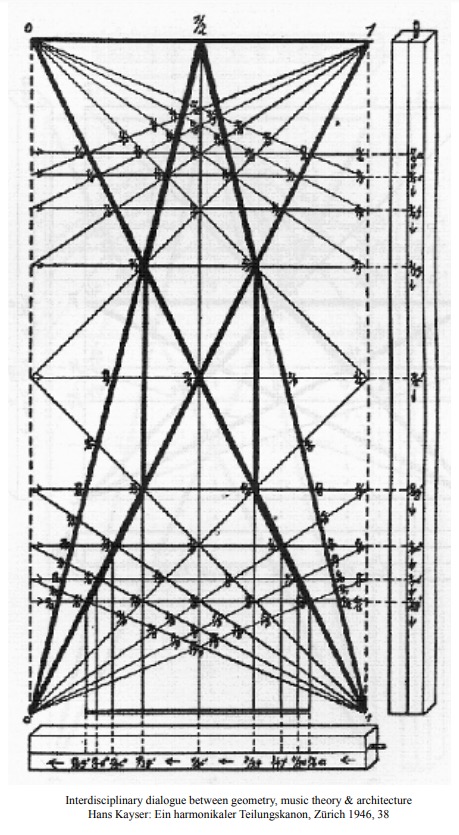
“The idea that the universe originated in sounds, or consists of sounds, was widely believed in ancient civilisations. At first this belief was outlined in myths and symbols. But when the Greeks evolved “from mythology to philosophy”, this concept was still accepted, and it was reflected by the Pythagoreans. Harmonic Thinking was based on numbers (arithmós, a, b), proportions (lógos, a:b), means (mesótes, a:m:b), and analogies (analogía, a:b = A:B anà lógon x:y) – especially analogies between nature, man and music, which we may call the “Golden Triangle” of Harmonic Thinking. Numbers and proportions (proportionality) rule the tone duration (rhythms) and intervals in music, but at the same time they are understood as universal laws, which correspond to psychic and intellectual dispositions of man as well as to the arts (téchne) and to ethical and political laws of the state (pólis).
This theory did not emerge all at once, since the school founded by PYTHAGORAS in the 6th century B.C. did not leave any written documents. One century later fragmentary writings came into light, and closer connections can we find in PLATONs dialogues Phaidon, Timaios, and Politeia. 500-600 years later, in the first centuries A.D., Pythagorean doctrines appeared again, in documents which have been proven to be authentic, so that it must be assumed that there was an active tradition at that time and during the centuries before.” -HISTORY OF HARMONIC THINKING BY WERNER SCHULZE
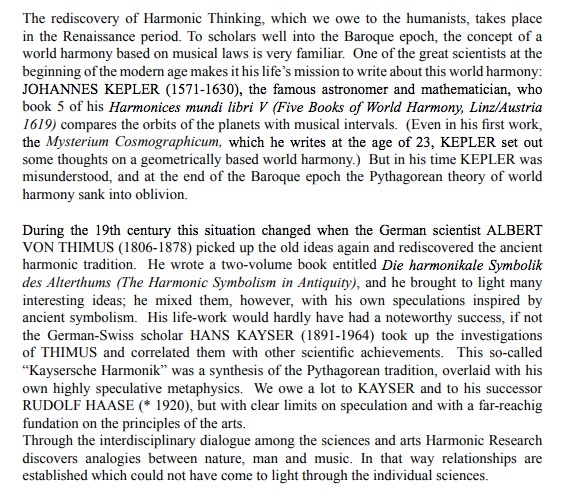
Continuing with Fabio’s paper entitled ‘Harmonic Principles in Endocrinology’
“The English writer Rodney Collin (1909-1956) published in 1953 “The Theory of Celestial Influence”, an impressive work that begins with the words: «In every age men have tried to assemble all the knowledge and experience of their day into a single whole which would explain their relation to the universe and their possibilities in it» [3]. In his “model of the universe”, Collin proposed a particular relationship between the endocrine glands of the human body and the planets of the solar system observed in relative progressive distances from their respective centres, the heart in the human body and the Sun in the solar system.
The relations proposed in this research between thymus/Venus, adrenal cortex/Earth, adrenal medulla/Mars, endocrine pancreas/main-belt asteroids, neurohypophysis/Jupiter, adenohypophysis/Saturn and testicle/Uranus originate from a possible correspondence between the glands and planets theorized by Collin. The same methodology as employed by Kepler in his search for harmonic relationships is used in this study with respect to the molecular masses of hormones and their receptors…

…The molecular mass of a chemical compound consists of the sum of the atomic masses of all the atoms that compose it and is numerically expressed in atomic mass units (u).
The molecular mass values of hormones and hormone receptors considered in this study were obtained from the online databases of PubChem [4] and UniProt [5]. Kepler was the first scientist to realize that the planets of the solar system follow elliptical orbits around the Sun. The elliptical orbit of each planet can be described by its perihelion, the minimum distance from the Sun, and its aphelion, the maximum distance from the Sun, and the two values can be expressed in astronomical units (AU). One AU represents the semi-major axis of the elliptical orbit of the Earth around the Sun, i.e. the approximate mean distance between the two bodies. The values of perihelia and aphelia of the planets considered in this study were obtained from the online database of Wolfram.

…Using Collin’s idea of correspondences between the endocrine glands in the human body and the planets of the solar system, and using the same methodology described by Kepler in his “Harmonices Mundi”, a number of statistically significant and harmonic relationships between the molecular masses of hormones and hormone receptors has been identified.

..It would be interesting to apply the same research methodology used by Kepler to other fields of scientific knowledge, as advocated by Haase: «And today, since we possess a new science of “research in harmonic principles”, in which these traditions are united with modern scientific knowledge, the harmonic components of the world become more visible than ever. We might even suggest that the purely quantitative, scientific observation of nature is perhaps a side effect of this worldview…
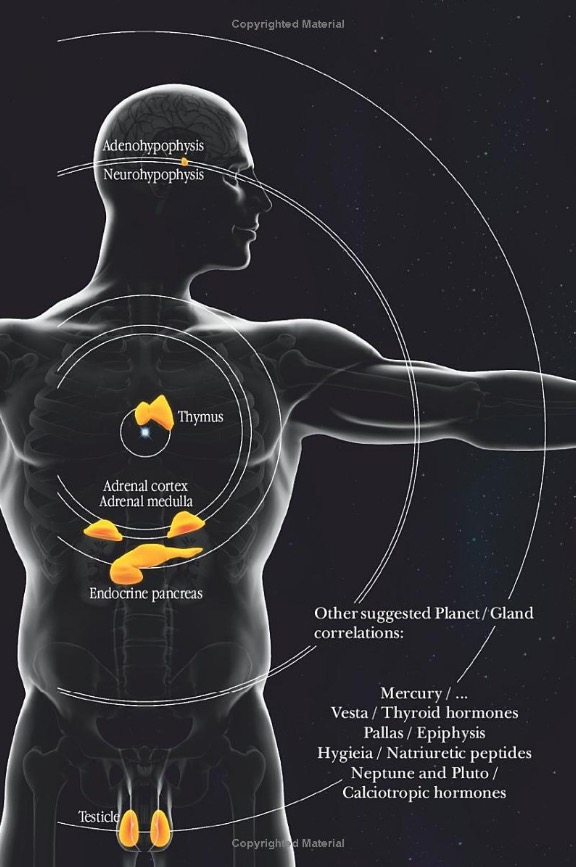
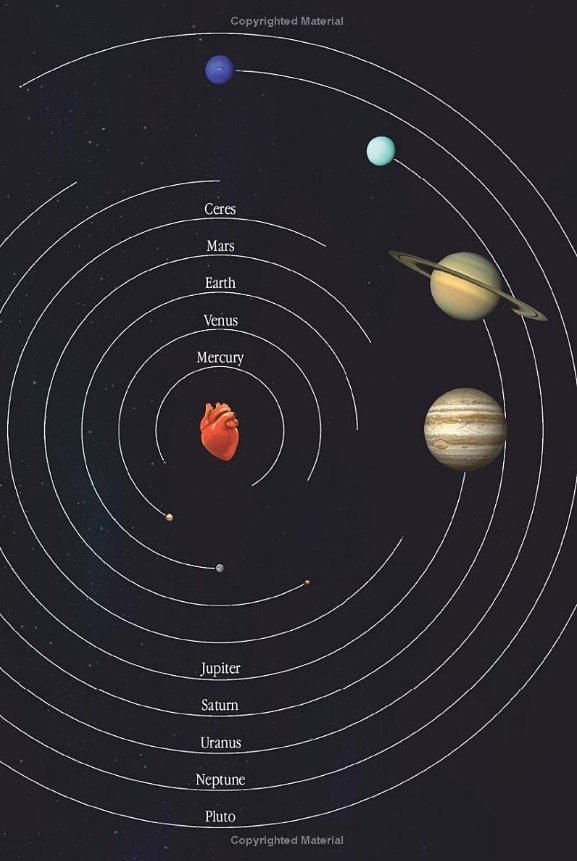
…In any event, this is how Kepler thought when he subordinated his scientific discoveries to harmonic laws. Since those times, the quantitative view of nature has predominated, and the thought of a harmony of the world appears more distant than ever, however urgently we need it. But this harmony can return to us, too; for it requires only another perspective on the world, the harmonic one, attainable at any time and perhaps more easily today than yesterday. Johannes Kepler sought and found the world harmony, and thereby became a pioneer of natural science. We modern people should turn to his World Harmony and learn to interpret the great achievements of natural science in its light, and thereby find our way back to the Harmony of the World” – Fabio Borziani
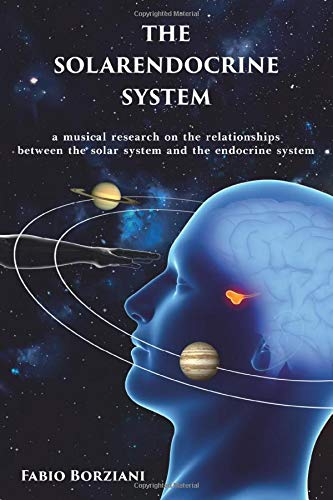
Many thanks to Mr. Borziani for his research; his book can be found on Amazon.

We have likely lost so much practical useful knowledge that what we have left is 1% of what could have been. We go to doctors for chemicals when there are likely correspondence principles which we could understand and deploy to work seeming magic.